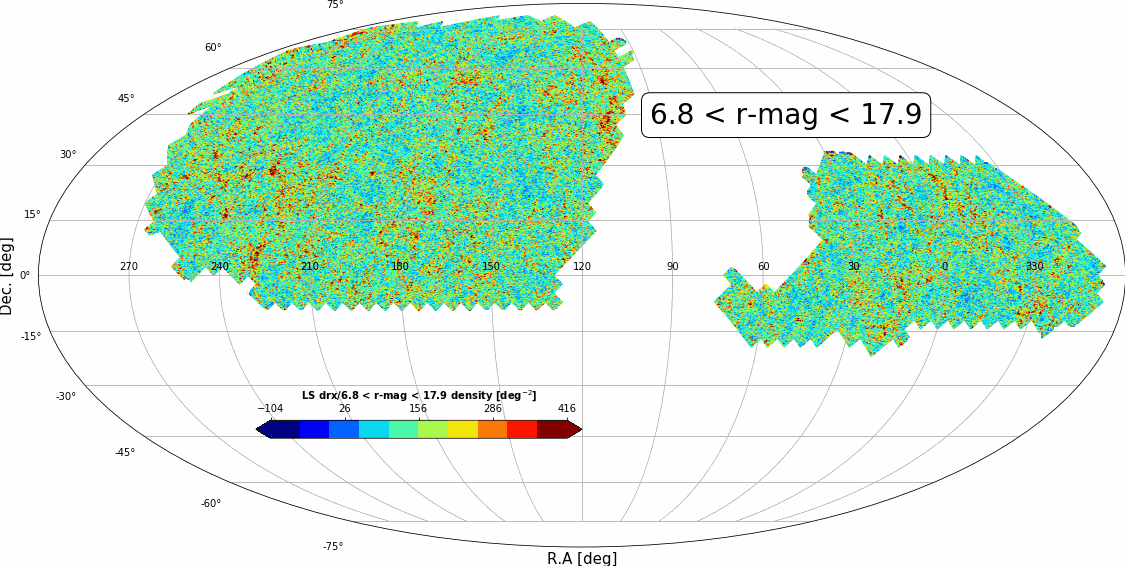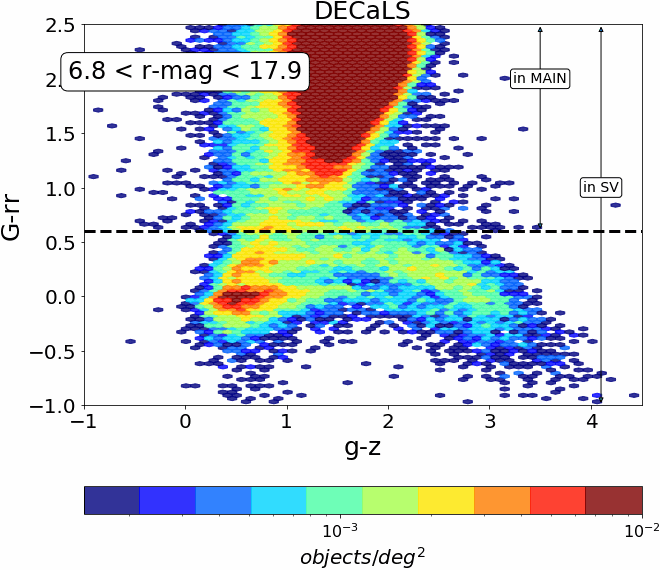Research

My research interest lies in the field of the Observational Cosmology, from Spectroscopic Surveys and galaxy formation to the large-scale structures of the universe and Dark Energy. One of the biggest questions of contemporary cosmology is the origin of late-time cosmic acceleration and the formation of large-scale structures (LSS). As a Ph.D. student, I am the lead on a key science goal of DESI, the selection of the biggest Bright Galaxy Sample (BGS) to date which aims to measure the positions to 20,000,000 galaxies over 14,000 square degrees with a median redshift of z ~ 0.2. The main science driver of this selection is to get the largest large-scale structure map of BGS galaxies at low redshifts to constrain dark energy models with unprecedented accuracy and therefore shed some light in the late-time acceleration question.
BGS uniformly samples galaxies to two magnitudes deeper than the main Sloan survey and will allow the most precise low redshift measurements to date of baryon acoustic oscillations (BAO), redshift-space distortions (RSD), and the clustering of galaxies as a function of intrinsic properties, such as luminosity and colour. Efficient target selection is central to achieving the scientific goals of BGS. I implemented a new way to do star-galaxy classification exploiting a combination of GAIA’s compact point spread function (PSF) and model magnitudes from the Legacy Surveys (LS) pipeline {\it TRACTOR}, showing more accurate results than methods relying on only LS model fitting. One of the key goals of my research is to provide the cleanest BGS catalogue for DESI to reduce the number of systematics foregrounds and increase the accuracy in the measurements of the cosmic large-scale structure (Ruiz-Macias et al., 2020). The tests that my pipeline has passed include i) completeness with respect to GAMA DR3: finding more than 99 per cent agreement. ii) Contamination around bright sources: with angular cross-correlations my BGS sample showed an impact of less than 1 per cent of contamination around bright stars and large galaxies. iii) Systematics: The BGS galaxy sample shows minimal (<5 %) systematics trends of galaxy density with properties such as the seeing, extinction, and stellar density. I've also implemented linear weights for the stellar density to mitigate the impact of such systematic, and there's a plan to implement multi-linear regression, non-linear weights and machine learning techniques such as ANN. iv) Angular clustering: comparing with the angular clustering of SDSS (Wang et al., 2013) and of a mock MXXL lightcone catalogue (Smithet al., 2017) shows, intriguingly, better agreement with the mock catalogue than SDSS, suggesting better agreement with the Planck Lambda-CDM model (Ruiz-Macias et al., 2020a) .
I am a Python enthusiastic and among my iterests is the building of interactive data visualization and web tools to the easy handling and understanding of cosmological observations. In that line, I've created a visual inspection (VI) web tool, the Legacy Surveys Visual Inspection tool (LSVI) to check over the imaging of the targets in an automatized and easy way.
